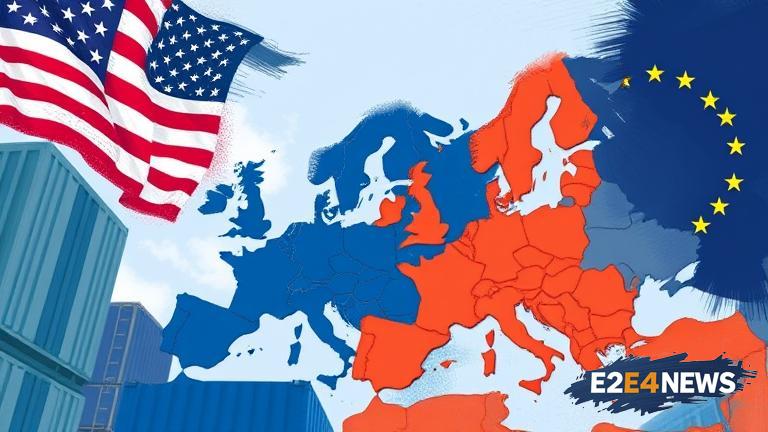The Eurozone economy has demonstrated its ability to withstand external pressures, as it has managed to edge up despite the ongoing trade tensions with the US. According to recent data, the economic activity in the Eurozone has increased, albeit modestly. This growth is a testament to the region’s resilience and its capacity to adapt to challenging global economic conditions. The trade strains with the US have been a major concern for the Eurozone, as the two economies are closely intertwined. However, the Eurozone has been able to mitigate the negative impacts of these tensions through a combination of monetary policy measures and fiscal discipline. The European Central Bank has played a crucial role in supporting the economy, by maintaining a accommodative monetary policy stance. The bank’s decision to keep interest rates low and to continue with its quantitative easing program has helped to stimulate economic growth. Furthermore, the Eurozone’s fiscal policy has also been supportive, with many member states implementing expansionary fiscal measures to boost economic activity. The growth in the Eurozone has been driven by a number of factors, including a pickup in industrial production, an increase in consumer spending, and a rise in business investment. The service sector has also been a key driver of growth, with many countries in the region reporting an increase in service sector activity. The Eurozone’s labor market has also been performing well, with unemployment rates falling to historic lows in many countries. The region’s economic growth has also been supported by a favorable external environment, with global trade volumes increasing and commodity prices remaining stable. However, despite these positive developments, the Eurozone economy still faces a number of challenges, including a slowdown in global trade and a rise in protectionism. The ongoing trade tensions with the US remain a major concern, as they have the potential to disrupt global supply chains and to undermine economic growth. The Eurozone must also contend with the risks associated with Brexit, as the UK’s departure from the EU has created uncertainty and volatility in the region. In addition, the Eurozone must also address its own internal challenges, including a lack of economic convergence between member states and a need for structural reforms to boost competitiveness. To address these challenges, the Eurozone must continue to implement policies that support economic growth and stability, such as investing in education and innovation, and promoting greater economic integration. The region must also work to strengthen its external relationships, including its trade relationships with the US and other major economies. By doing so, the Eurozone can help to promote economic growth and stability, and to ensure that it remains a major player in the global economy. The Eurozone’s economic growth has also been driven by the growth of key member states, such as Germany and France. These countries have been the driving force behind the region’s economic growth, and their performance has been closely watched by investors and policymakers. The growth in these countries has been driven by a number of factors, including a pickup in industrial production, an increase in consumer spending, and a rise in business investment. The Eurozone’s economic growth has also been supported by the growth of the region’s financial sector, with many banks and financial institutions reporting an increase in profits and activity. Overall, the Eurozone economy has shown signs of resilience and growth, despite the ongoing trade tensions with the US. The region’s ability to adapt to challenging global economic conditions has been impressive, and its economic growth has been driven by a number of factors, including a pickup in industrial production, an increase in consumer spending, and a rise in business investment.
